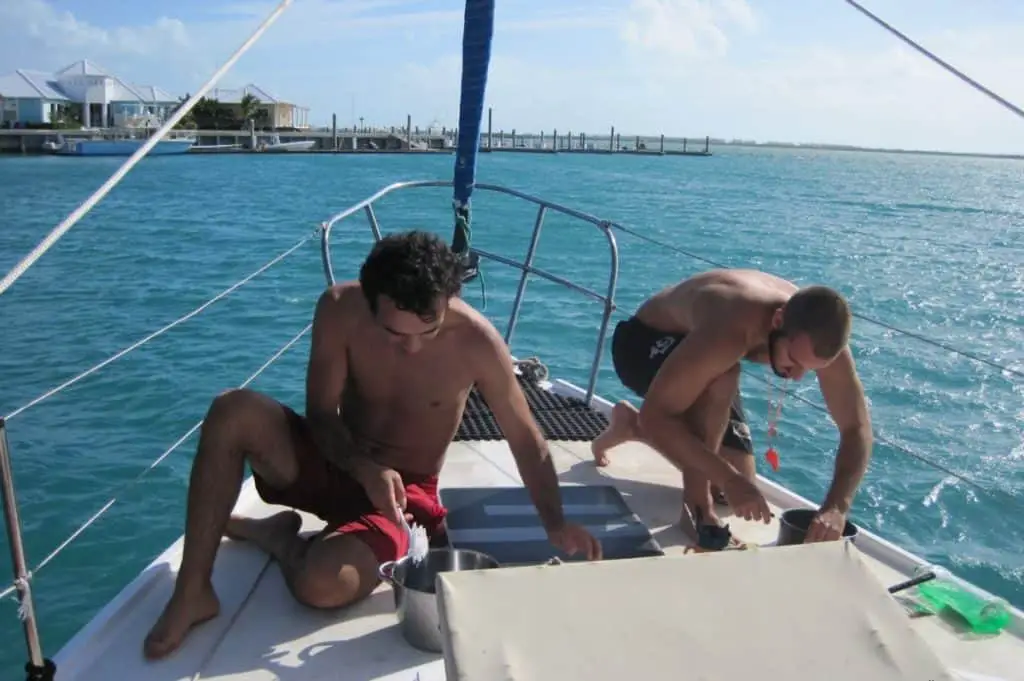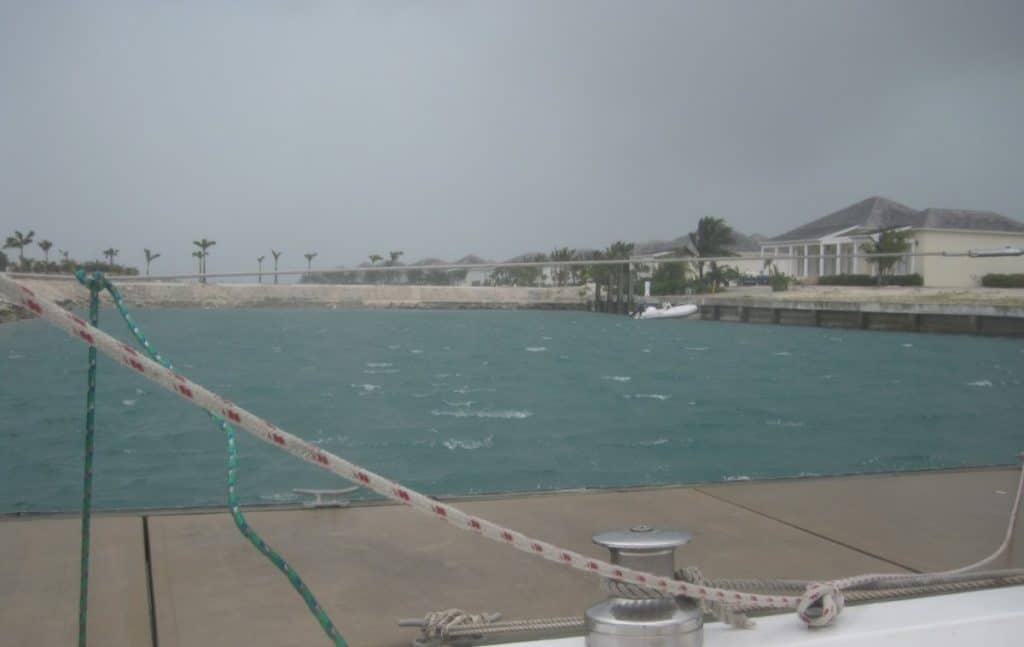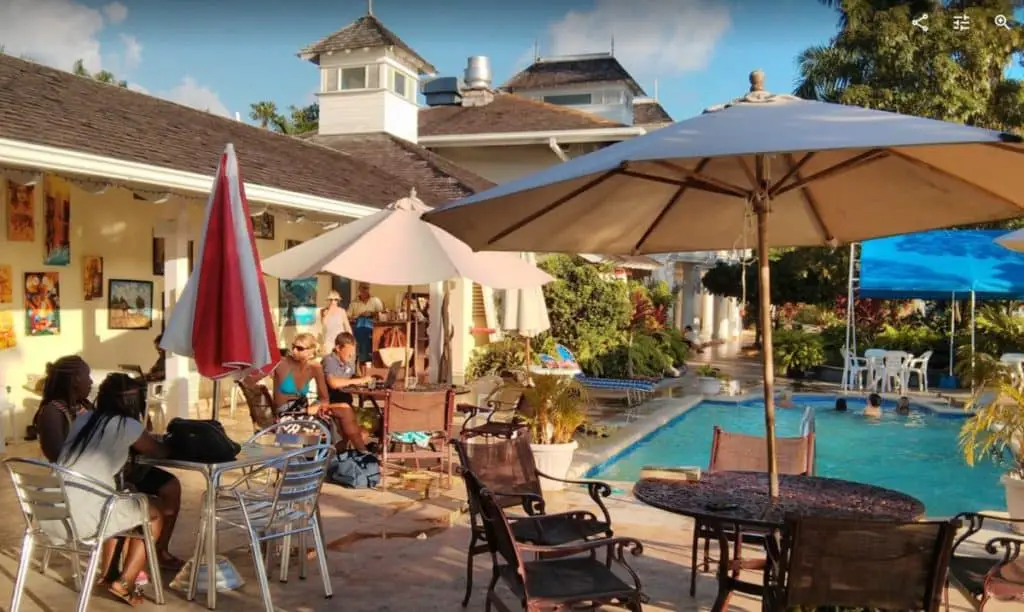As an Amazon Associate, we earn from qualifying purchases. We may also earn commissions if you purchase products from other retailers after clicking on a link from our site.
After coming back home from the Bahamas, I got many questions regarding how I could afford to live on a sailboat in the Caribbean. Today I would like to discuss how you can live on a boat in the Caribbean and how much it costs!
It costs between 200 dollars to 3000 dollars a month to live on a boat in the Caribbean. The cost of living will vary depending on your lifestyle, how often you go sailing, and where you moore your vessel, among other factors.
This article breaks down the costs of living on a boat in the Caribbean, potential differences in expenses per region, and fees you can expect. Read on for more details.
Here are some amazing places to liveaboard around the world if you decide not to go to the Caribbean!
How Currencies of the Caribbean Compare to the US Dollar
The US dollar is more valuable than most currencies of the Caribbean, except for the Bahamian dollar, which is on par with the US dollar, and the Euro, which is slightly worth more.
A currency’s value changes according to local and international economies. If you want to know the most up-to-date rates, use Google’s exchange rates tool by typing your query into the search bar.
The table below shows the value of the US Dollar in the Caribbean islands as of March 20, 2022, rounded to the nearest dollar.
| Country: | Value of $1 USD: | Local Currency Name and Abbreviation: |
| The Bahamas | $1 | Bahamian Dollar (BSD) |
| Cuba | $24 | Cuban Peso (CUP) |
| Jamaica | $153 | Jamaican Dollar (JMD) |
| Haiti | G105 | Haitian Gourde (HTG) |
| Dominican Republic | $55 | Dominican Peso (DOP) |
| Puerto Rico, The Turks and Caicos Islands, The British Virgin Islands | $1 | United States Dollar (USD) |
| Cayman Islands | $1 | Cayman Islands Dollar (KYD) |
| Anguilla, Montserrat,Dominica,St. Lucia,St. Vincent and the Grenadines,Grenada | $3 | East Caribbean Dollar (XCD) |
| Guadeloupe, Martinique | $1 | Euro (EUR) |
| Barbados | $2 | Barbados (or Bajan) Dollar (BBD) |
Entry Fees for Caribbean Countries

If you’ve traveled to another country, especially one that’s a common destination for tourists, you’ve likely paid an entry fee as part of your boat or plane ticket.
Countries use entry fees to fund tourism-related objectives, which helps conserve public funds. Fifty-six countries charge entry and or departure fees.
Boat Entry Fees in the Caribbean
If you’re planning on living on a boat in the Caribbean, expect to pay entrance fees of several hundreds of dollars upon arrival. How much you pay is based on the size of your vessel and length of stay.
Here are the entrance fees for the Caribbean islands.
The Bahamas
| Vessel Length | Length of Stay | Entry Fees (includes cruising permit) |
| 34 Feet (10.36 Meters) | 3 Months | $150 |
| 12 Months | $300 | |
| 35-99 Feet (10.66-30.18 Meters) | 3 Months | $300 |
| 12 Months | $600 | |
| 100-149 Feet (30.48-45.42 Meters) | 3 Months | $500 |
| 12 Months | $1,000 | |
| 150-200 Feet (45.72-60.66 Meters) | 3 Months | $800 |
| 12 Months | $1600 | |
| Over 200+ Feet (60.96+ Meters) | 3 Months | $1,000 |
| 12 Months | $2,000 |
Additionally, a passenger arrival tax of $20 per person will be applicable for any pleasure vessel with more than three crew or passengers of or above the age of six years that are not residents of The Bahamas.
Jamaica
US vessels can cruise Jamaican waters uninterrupted for one year before requiring a Cruising Permit renewal. A fee of $300 (USD) is payable for the permit issuance.
Dominican Republic
Upon arrival at an authorized entrance port, expect to pay a US$10 tourist card fee for each passenger and approximately US$75 per boat to immigration. Said fees are only paid once, i.e., on arrival.
The tourist card is valid for 30 days, but you can apply for a staying extension to extend your stay up to 120 days.
Saint Lucia
There’s a clearance fee of EC$5 (US$ 1.85) for boats under 40 feet and EC$15 (US$ 5.55) for boats over 40 feet. You will also be asked to reveal which anchorages you intend to visit. If you include a port that’s not a designated port of entry, you have to pay EC$25 (US$ 9.25) for a mooring permit.
Anguilla
| Length of Stay | Entry Fees (includes cruising permit) | ||
| Up to 5 tons (4,536 kgs) | 5 tons (4536 kgs) to 20 tons (18,144 kgs) | Over 20 tons (18, 144 kgs) | |
| One Day | $75 | $150 | $375 |
| One Week | $275 | $750 | $1,500 |
| One Month | $700 | $2,250 | $3,000 |
| Three months | $1,400 | $6,000 | $8,500 |
The fees listed are East Caribbean dollars. You don’t need a cruising permit to visit the main anchorage of Road Bay.
Meanwhile, other islands only required departure fees, but no entry fees. Here they are.
Montserrat
You require a Coastal Cruising authorization from Customs and Immigration to land at any authorized beach in Montserrat for up to seven days. The permit is free.
The British Virgin Islands
Entry fees you can expect in the BVI include:
- $20 per vessel
- Custom fees, which are based on the tonnage of your boat and reportedly range between $8 and $55
- If you stay for over 1 month, you’ll pay a Temporary Importation fee of $200 that covers your boat for one year
Cuba
US citizens can not currently sail to Cuba on one’s own vessel. The entry fees for permitted foreign vessels include a US$ 55 clearance and cruising permit fee and a US$75 tourist card fee per passenger.
Puerto Rico
US registered boats of 30 feet and over must display a Customs decal, which can be purchased when clearing in for $27.50.
The Customs decal is valid for an entire calendar year throughout the US and its territories, exempting your boat from further Customs charges. Foreign vessels require a US cruising permit, which costs $19.
You can only extend your cruising permit for so long in the Caribbean. So if you intend to stay in one country for an extended period, ensure to make the necessary arrangements with the country’s Immigration Department, ideally before you arrive.
Marina Fees in the Caribbean

If you own a boat, you know about boring marina fees. These fees fund improvements and maintenance of the marina.
Marina fees in the Caribbean are paid by the day, month, or year. You can get a marina slip with decent amenities and high security in the Caribbean for around $800 a month. But this amount can be lower or higher, depending on the length of your boat, the slip rates, and the marina location.
When you add other costs, including electricity, garbage removal, and pump-outs, the cost of staying in a marina can add up pretty quickly.
Unlike campgrounds and RV parks, marinas rarely include utility and service costs in their docking fees. Consequently, your stay might prove more expensive than you think.
For this reason, it’s essential to keep an up-to-date record of your expenses while living on a boat in the Caribbean to ensure you stay within budget during your stay.
Marina Fees You’ll Encounter When Living on a Boat

Living on a boat isn’t free. In addition to paying for dockage, you’ll also encounter costs for electricity, refueling, Wi-Fi, garbage collection, pump-outs, haul-out services, among others.
Gassing up at a marina will often cost you around $3-$6 per imperial gallon (1.2 US liquid gallon). Gasoline prices are low across the Caribbean, excluding earthquake-torn Haiti, where fuel is scarce.
Pump-outs will probably also range between $3-$6. Your marina may not allow you to perform the task yourself. If a worker is required to pump your sewage, you’ll need to pay additional labor fees.
Electricity prices will highly depend on the equipment present at your marina of choice. Call or email your chosen marina beforehand to learn their rates.
Marinas in the Caribbean price haul-out services according to vessel size. These services cost between $3-$5 per foot. Your marina may also include maintenance fees such as pressure-washing or scraping, so ensure to ask beforehand.
That said, some marinas may not require all these fees. They might be fee-free, meaning they likely won’t provide many services. If there are certain services you need, call ahead to find out if the marina you’re considering offers them.
Rental Vehicles and Transportation in the Caribbean
There are various ways of getting around in Caribbean countries. You can use public transportation, rent a car, take a taxi, or request a ride on a ridesharing app like Uber. So of these options, which is the least costly?
According to Kayak, you can rent a car in the Caribbean for as low as $20 a day.
Taxi prices vary from country to country. In Jamaica, for instance, the base rate for route taxis is $95 (US$ 0.62) and $5.50 (US$ 0.036) for each additional kilometer (0.62 miles). While in the Bahamas, the maximum fare taxi drivers can charge you is $3 for the first ¼ mile (0.4 kilometers) and 40c for each additional ¼ mile for up to two passengers. The passenger rate for passengers above two is $3.00 each— $4 in New Providence.
Public transportation like buses or jitneys is the least expensive travel option in the Caribbean. In Jamaica, the Jamaica Urban Transit Company, which is government-owned, offers budget fares, starting at $100 (US$ 0.65) for adults and $30 (US$ 0.20). In the Bahamas, one-way rides in jitneys can cost $1.25 to $3.50 per person.
The Daily Cost of Living in the Caribbean

The Caribbean’s cost of living is a common talking point, but is it truly as affordable as people say?
Yes, the cost of living in Caribbean countries is low overall. Food prices rose because of COVID-19, but the UN doesn’t expect this to continue. Restaurant food and street food costs less than $10, beer costs as little as 4 cents, gasoline prices are low, and foreign currencies are valuable.
Even with VAT, living in the Caribbean is affordable. The largest expenses you’ll encounter are the marina fees.
Three Ways To Save Money While Living on a Boat in the Caribbean
The cost of living in the Caribbean countries is low (Excluding some of the most popular islands for cruisers, such as the virgin islands etc), but that doesn’t mean you can’t—or shouldn’t—minimize your spending.
Here are three ways to save money while living on a boat in the Caribbean.
1. Choose a Country or Territory Where Your Interests Are Cheap
Certain activities are cheaper in some Caribbean countries than they are in others.
For example, exploring Anguilla can be very expensive. Just cruising its waters for one day will cost you between US$ 28 and US$ 139, depending on the weight of your boat. So if you enjoy sailing, you’re better off traveling to a country with low cruising permit costs.
Basing your destination on where you can enjoy your desired activities and enjoy a luxury lifestyle for less will help you save money.
2. Compare Exchange Rates of Different Destinations
Earlier in the article, we talked about the value of your money in the Caribbean. We saw 1 US dollar is equivalent to 155 Jamaican dollars or 2 Bajan dollars. But what does this mean for you?
Your US dollars are more valuable in Jamaica than it is in Barbados. So in the former destination, you’ll receive more local currency in exchange.
Consequently, you’ll be able to do more and live more comfortably in Jamaica than in Barbados with the same budget.
However, since exchanging currency can be complicated and confusing, some prefer visiting countries or regions with more stable currencies. Say, Puerto Rico, whose currency is the US dollar, and Guadeloupe and Martinique, which use the Euro. While this simplifies things, your stay can be more expensive.
3. Shop in Local Stores Outside of Touristy Areas
Tourists often pay more than locals, and the Caribbean is no different.
It’s, therefore, a good idea to brush up on the local language and go beyond the usual tourist areas to shop. By doing this, you’ll not only avoid price mark-ups but also meet the locals, forge meaningful friendships, and discover new experiences.
Conclusion
Expect to pay hundreds of dollars to thousands of dollars a month to live on a boat in the Caribbean. The bulk of your expenses will be marina fees since the cost of living is far lower than in the US.
Some of the costs you’ll encounter include entry fees, dockage fees, utility costs, and fuel costs. When ashore, using public transportation will be more cost-effective than renting a car or taxi services.
Although cost is important, another necessary consideration is what type of liveaboard boat fits you the best so you get the most out of your adventure.
To save money, choose where your lifestyle habits will be more affordable and consider the exchange rate in destination islands.
Sources
- Lonely Planet: Caribbean in Detail – Money and Costs
- Hikers Bay: Caribbean Prices 2022
- Food and Agriculture Organization: FAO Food Price Index
- International Food Policy Research Institute: COVID-19 and rising global food prices: What’s really happening?
- Technomadia: How Much Does It Cost to Stay in Marinas?
- Better Sailing: Cheap Marinas for Long-term Docking in the Caribbean
- The Bahamas Customs & Excise Department: Pleasure Vessel Clearance
- Maritime Authority of Jamaica: Cruising Permit Guidelines for Issue
- Dominican Republic Tourism Official Website: Marinas
- Frommer’s: Entry Requirements and Customs in Puerto Rico
- Boat BVI Luxury Yacht Charters: Customs and Immigration
- Saint Lucia: Navigation & Clearance
- Noonsite: Montserrat – Formalities
- Noonsite: British Virgin Islands – Formalities
- Noonsite: Cuba – Formalities
- Noonsite: Puerto Rico – Formalities

